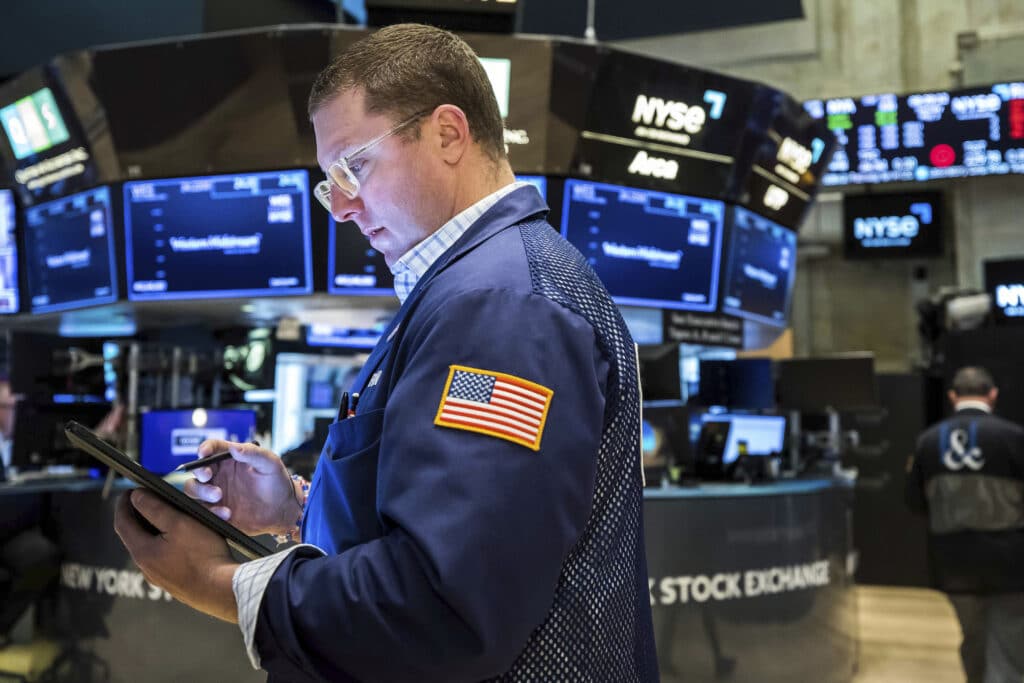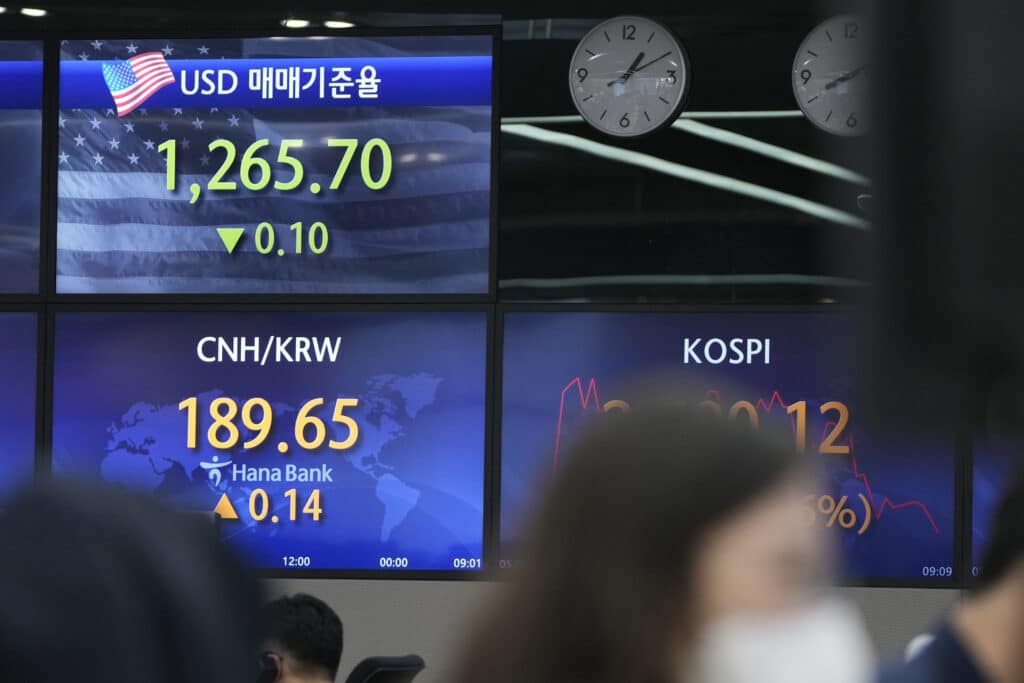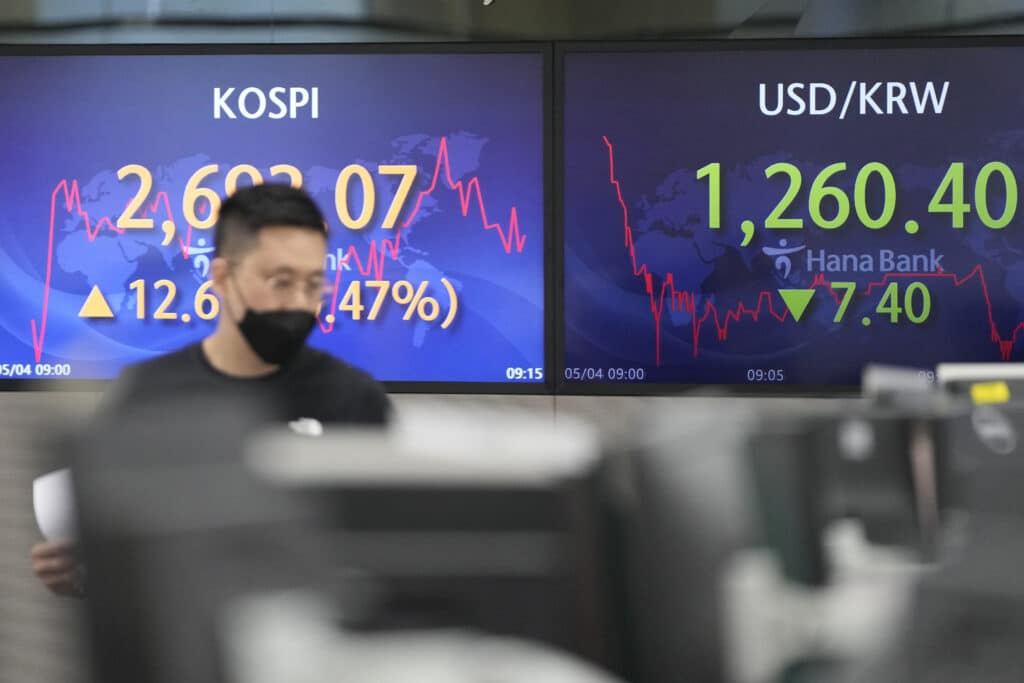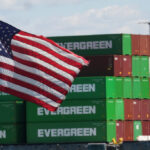Fed policymakers are expected to raise the U.S. central bank’s benchmark rate by twice the usual amount this week, ramping up their fight against inflation that is at a four-decade high, and which the Biden Administration seems unable to tackle. Central banks in many countries are raising rates as inflation squeezes businesses and consumers, fuel, food, and daily necessities are all rising in cost. As reported by the AP:
Futures for the Dow industrials and the S&P 500 gained 0.4% with less than two hours before markets opened
NEW YORK (AP) — Wall Street headed toward gains before the market opened Wednesday as investors waited for the Federal Reserve to announce another expected interest rate hike, as the Fed tries to combat inflation.

Shares in Asia closed mostly down and European markets were largely in negative territory by midday.
Central banks in many countries are raising rates as inflation squeezes businesses and consumers. To counter that, regulators are gradually increasing costs for borrowing that had dipped to record lows during the pandemic.
Fed policymakers are expected to raise the U.S. central bank’s benchmark rate by twice the usual amount this week, ramping up the Fed fight against inflation that is at a four-decade high. The Fed already has raised its key overnight rate once, the first such increase since 2018, and Wall Street is expecting several big increases over the coming months.
“All eyes are peering toward the FOMC meeting, and a rate hike is an absolute given,” Clifford Bennett, chief economist at ACY Securities, said in a commentary.
Germany’s DAX teetered between small gains and losses, while the CAC 40 in Paris lost 0.5% and Britain’s FTSE 100 shed 0.4%.
In Asian trading, Hong Kong’s Hang Seng dropped 1.1% to 20,861.27 while the Kospi in Seoul lost 0.1% to 2,677.57. Australia’s S&P/ASX 200 gave up 0.2% to 7,304.70.

India’s Sensex lost 1% to 56,425.88. Taiwan’s benchmark rose and most other regional markets were closed, including those in Japan and mainland China.
The higher lending rates may crimp economic growth as they come at a time when surging prices are squeezing consumers’ capacity to spend.
Market players might pick up bargains on the assumption that the rate increase has already been taken into account, Bennett said. But he added that “this excludes the ongoing shock to consumers and particularly mortgage holders that will reverberate in an accelerating fashion throughout the economy. This ‘pain’ process will likely continue for the next one to three years in the real world.”
Adding to that are the uncertainties brought by Russia’s invasion of Ukraine.
Oil prices rose sharply as the European Union said it was preparing new sanctions against Russian energy over the war in Ukraine, though Slovakia and Hungary said they would oppose such measures.
Newly proposed sanctions drafted by the EU’s executive branch, the European Commission, could include a phased-in embargo on Russian oil. That could strain supplies and push prices still higher.
Benchmark U.S. crude rose $4.57 to $106.98 per barrel in electronic trading on the New York Mercantile Exchange. It gave up $2.76 on Tuesday.

Brent crude oil, the basis for pricing international oils, gained $4.53 to $109.50 per barrel.
Investors have been closely reviewing the latest round of company earnings to get more details on how inflation is impacting business and consumer activity.
They also are getting some updates on the labor market, which was slow to recover from the pandemic initially, but has grown stronger. The Bureau of Labor Statistics reported on Tuesday that employers posted a record 11.5 million job openings in March, meaning the United States now has an unprecedented two job openings for every person who is unemployed.
On Friday, the Labor Department is expected to report that the economy generated another 396,000 new jobs in April, according FactSet. That would mark an unprecedented 12th straight month that hiring has come in at roughly 400,000 or more.
The U.S. dollar fell to 129.94 Japanese yen from 130.11 yen late Tuesday. The euro edged up slightly to $1.0529.






